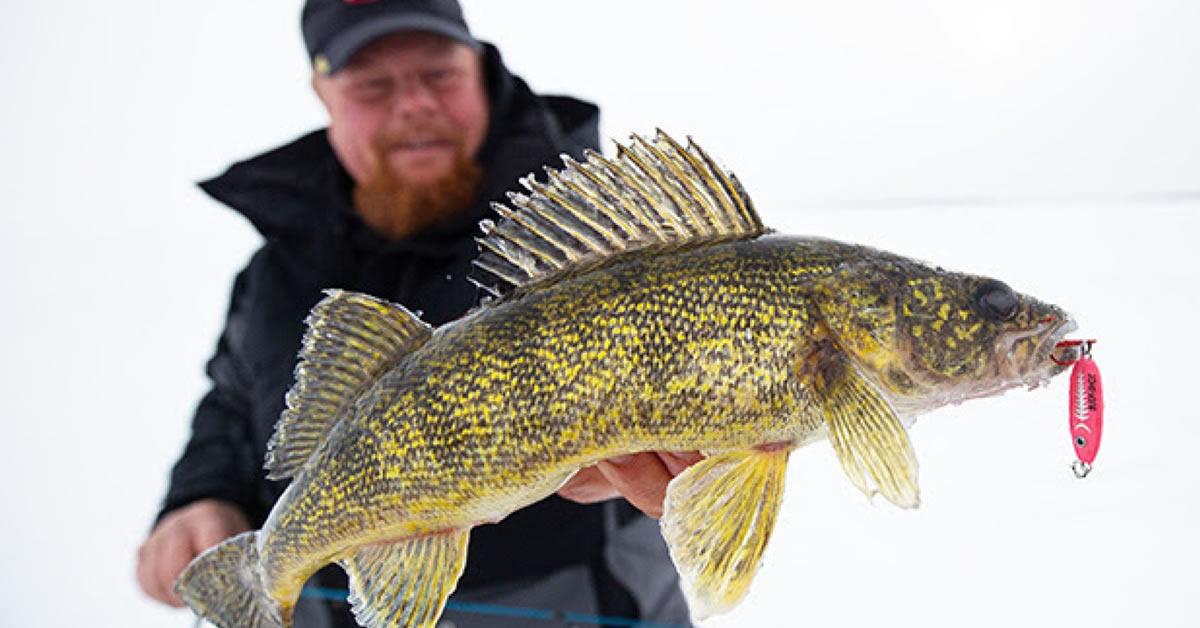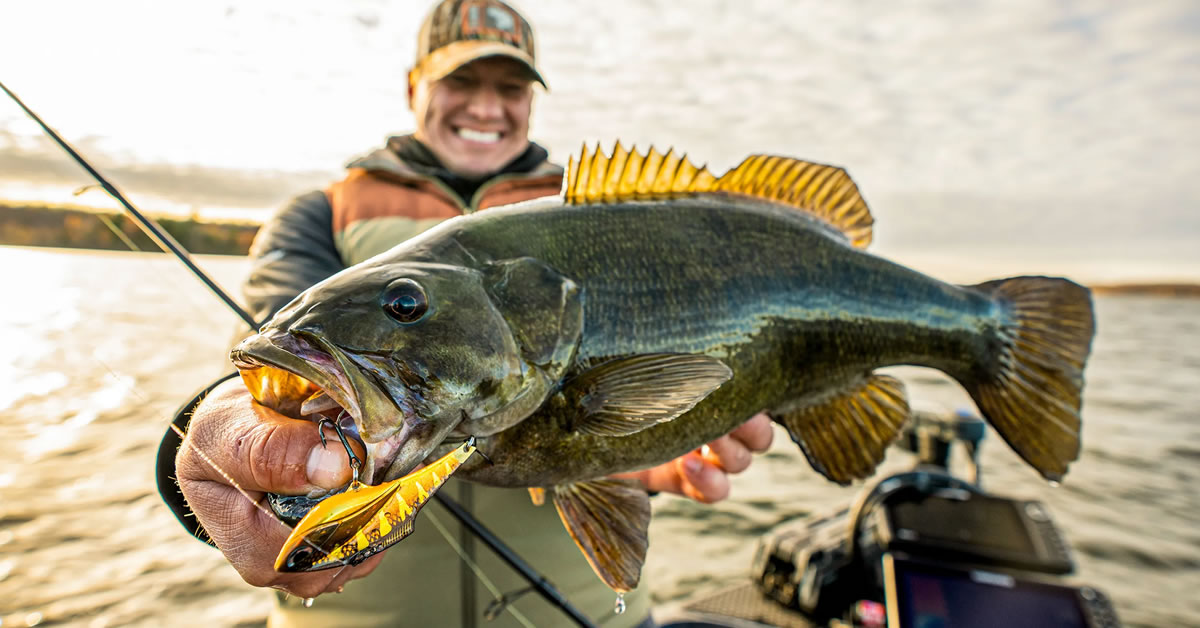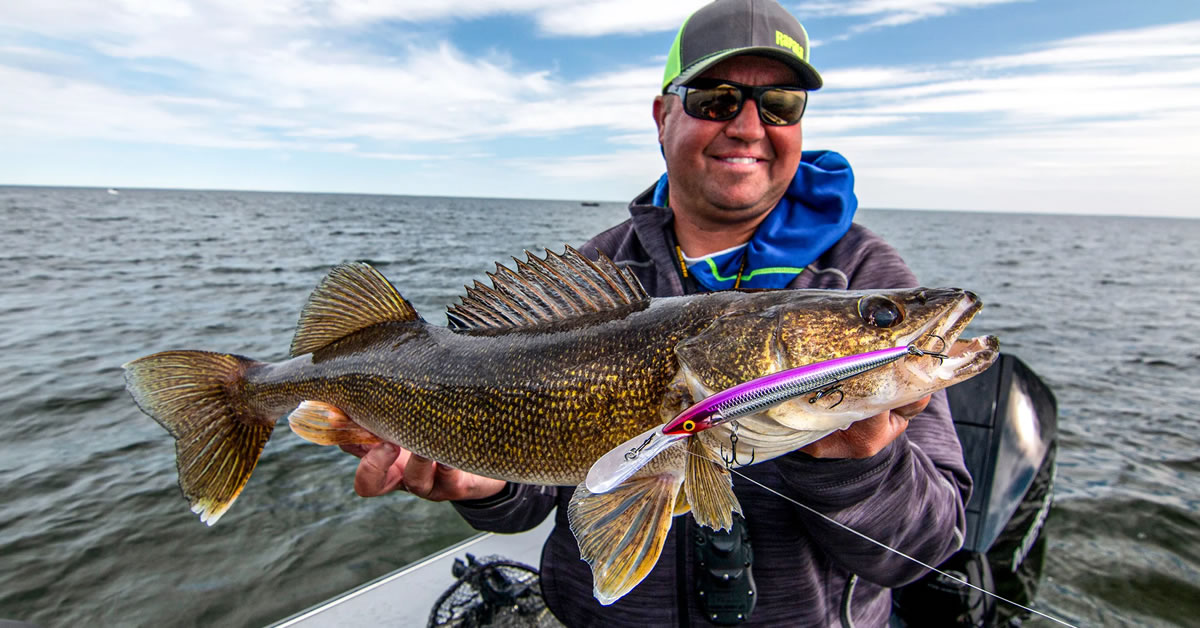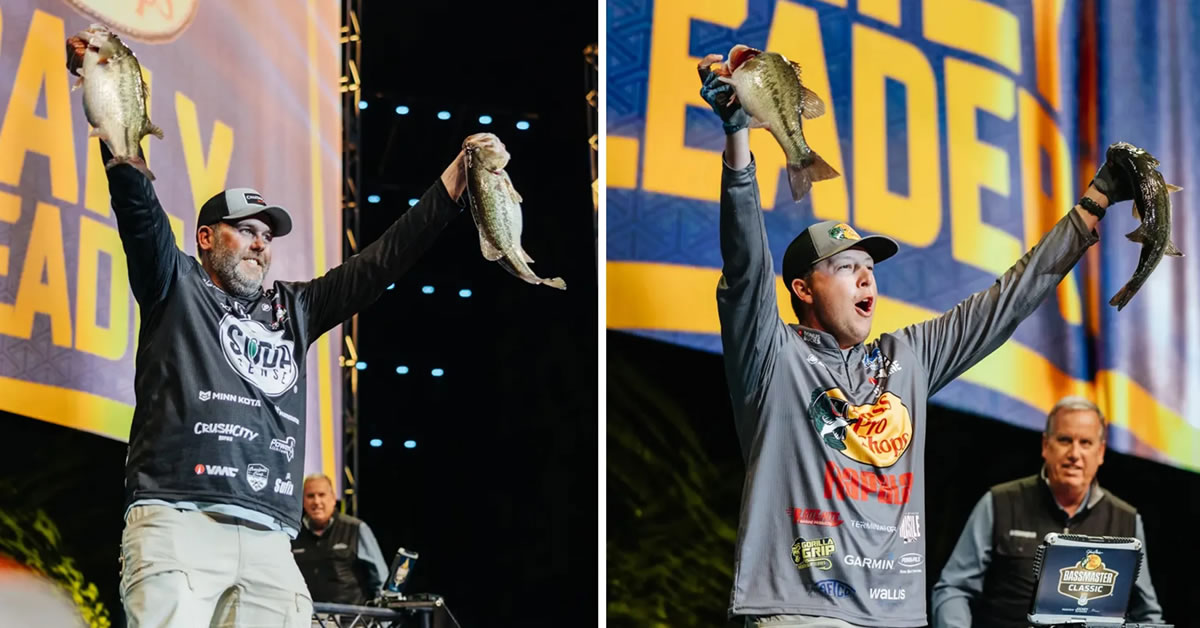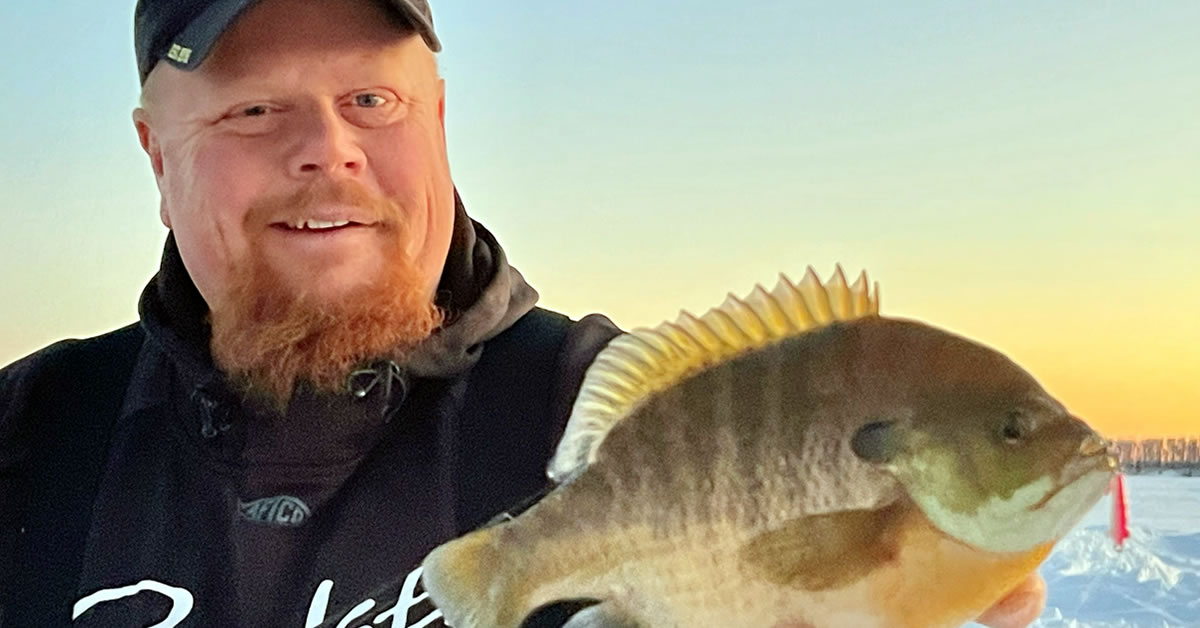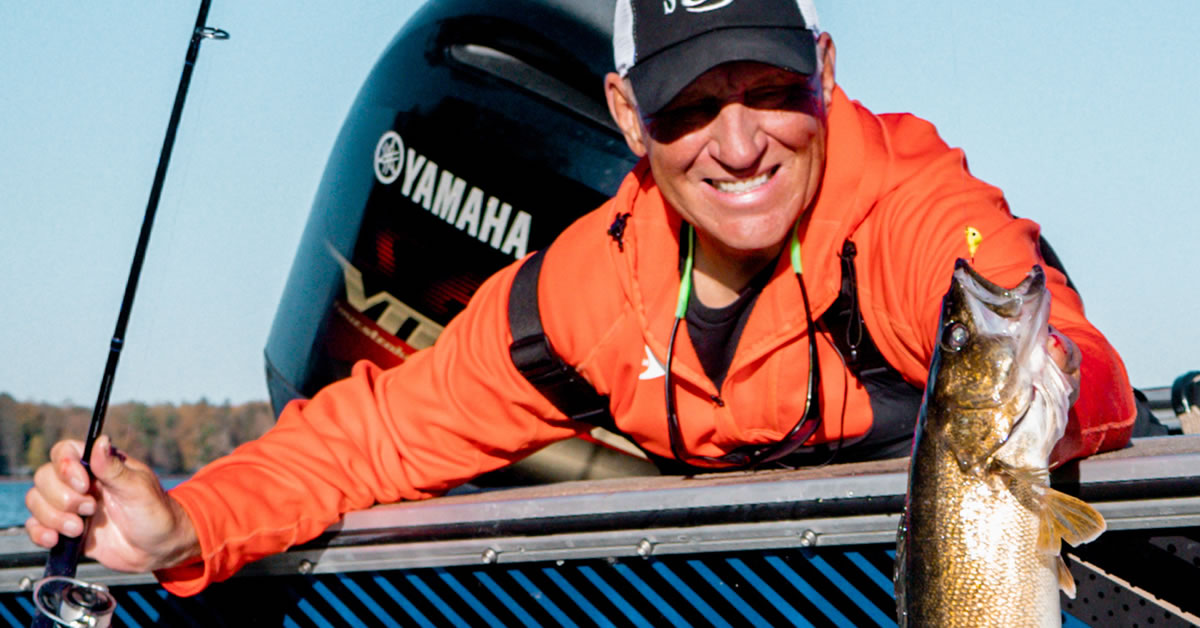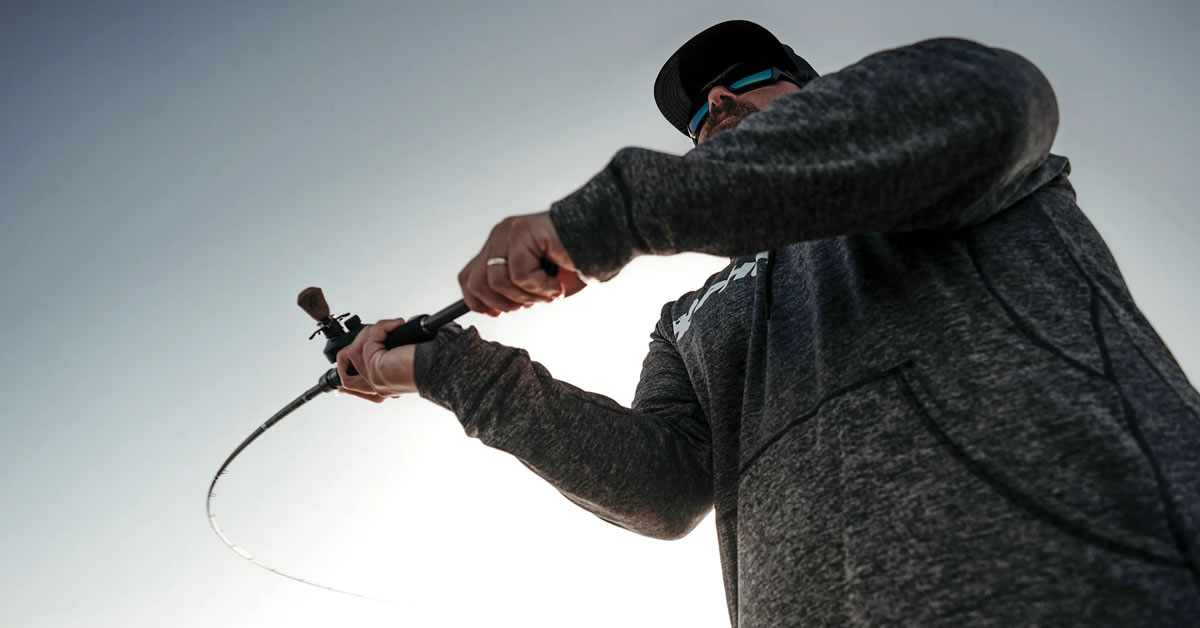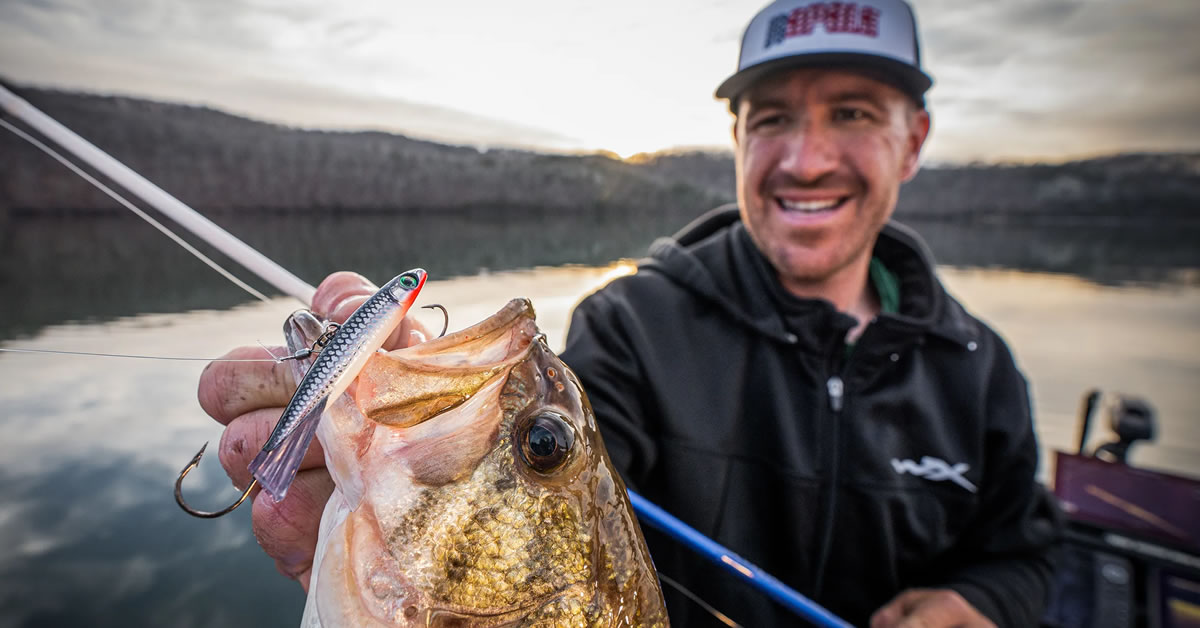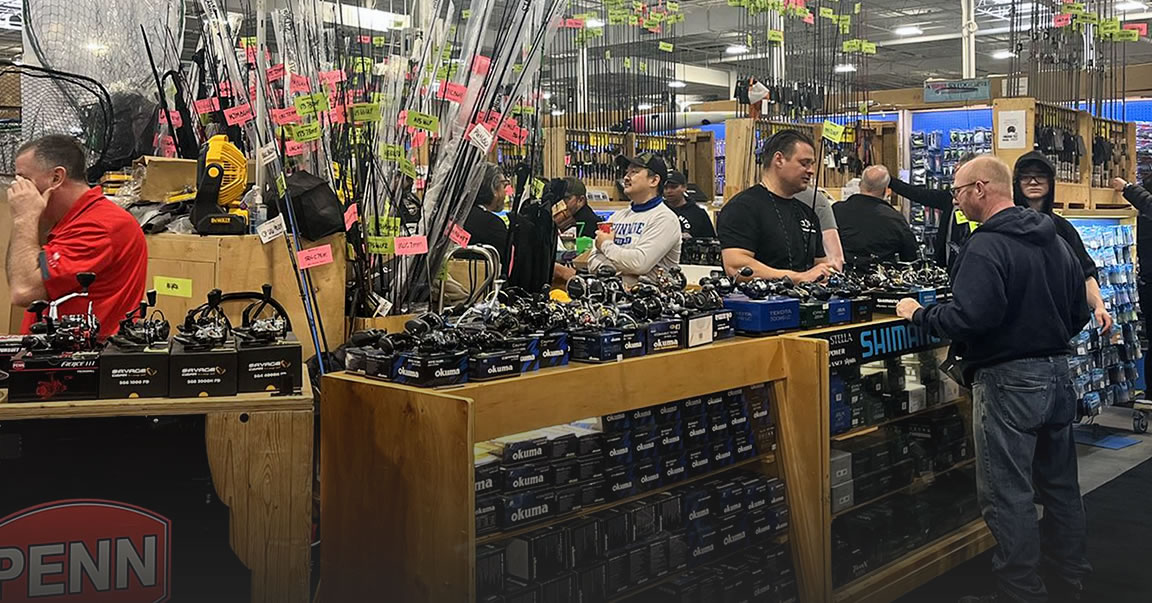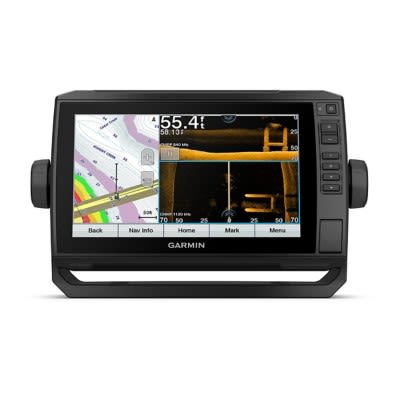Expert Jigging Methods
by Fishing The Wild SideWritten By Doug Newhoff
Many fish ago, long before Oly Evinrude was a sparkplug in his father's eye or Lauri Rapala put an edge on his first carving knife, the idea of the leadhead jig was conceived. It solved many problems for our angling forefathers. It could be made to look like many of the creatures gamefish favor. It provided weighting that allowed it to be lowered to great depths or cast from afar. It could be tipped with live bait to give it a realistic look and scent. Few lures have ever been tweaked, modified, re-invented or discussed more than the jig.
Manufacturers have produced round heads, wedge heads, flat heads, banana heads and stand-up heads, to name a few. They've given us bucktail jigs, maribou jigs, hair jigs and tinsel jigs. They've introduced weedless jigs, floating jigs and rattling
|
It's what we can do with a jig that sets it apart from every other lure and assures its status as the most popular and most productive bait ever. Every species of gamefish can be caught on a jig, whether it's brim in the Deep South, bonefish in the Florida Keys or walleyes in the Midwest.
Successful walleye anglers, in particular, make jigs a focal point of their game plan much of the year because of their versatility and effectiveness at all depths and in all conditions. In fact, some hard-liners contend that all they need is a handful of jigs to catch walleyes any time of the year. They bank on the confidence that they can make a jig do whatever it needs to do whenever they want it to.
The tournament-tested pro staff at Fishing the WildSide isn't ready to abandon crankbait, live-bait and other presentations, but experience has proven that any angler who doesn't have an extensive knowledge and command of jig-fishing applications has no chance to be competitive on a consistent basis. Most of all, jig-fishing is fun. It's interactive. It calls on an angler's sense of touch and feel, and sometimes rewards us with powerful strikes. Jig-fishing also challenges our minds to adapt presentations to meet existing conditions. Along the way, we all develop our favorite methods of jigging.
Snap-jigging
Jig-fishing doesn't have to be a finesse sport.
Snap-jigging consists of lowering a jig to the bottom, aggressively snapping it up a couple of feet, then letting it free-fall back to the bottom. It works best when drifting or moving with an electric motor.
"The fact that the jig drops vertically is the reason it works almost any time during the open-water season," says Chip Leer, co-founder of Fishing the Wildside and the Leech Lake Guide Coalition. "You're not ripping it away from the fish. You are forcing the fish to make a decision, which is exactly the opposite of holding something in front of them and enticing them to bite.
"With snap-jigging, you are trying to catch them by surprise and force them to react."
Leer likes to employ the technique when he's fishing open or long pieces of structure that encourage long drifts. That can include sand flats, breaklines or reefs. Depths where snap-jigging is effective are typically 15 feet or less.
"I've gone along and found pods of fish in these areas, but when you go back and sit right on top of them, you can't seem to get them going with vertical jigging," he relates. "It's almost like they hear the train coming. The jig gets ripped through the water, and it makes a commotion that gets their attention.
"I've found that I do better when I can keep moving."
Leer's favorite jig for snapping is a Northland Tackle Stand-up Fire-Ball.
"A lot of the flats where snap-jigging works well have a little vegetation on them," he explains. "The Stand-Up Fire-Ball has the eye at the front of the jig, so it doesn't pick up any grass or clutter off the bottom. I tip it with a 2- to 3-inch minnow threaded onto the hook. It's important to get it lined up straight. If not, it tends to fall off to the side. If it's center-hooked, it will drop straight.
"You need a pretty tough minnow. Early in the year, I like big shiners. Otherwise, I use a fathead or a rainbow chub."
When walleyes are feeding on aquatic insects, grubs or crayfish, Leer turns to other jigging methods.
"In this region, sometimes those fish are feeding on little tiny crayfish that are running around out on those flats in the grass," he explains. "If that's the case, dragging can be more effective because they are looking down as they feed.
"If the minnow bite is on, then snapping is the way to go because the walleyes are actually feeding up and out rather than down, and they will exert a little effort to go get a minnow."
.jpg)
If the walleyes are biting short, Leer switches to a Northland Lip-stick jig, which retains the stand-up properties, but features a hook with a longer shank.
"You can use a stinger, but I try to avoid that," he adds. "If there's any vegetation at all, those stingers always seem to find it."
Equipment is an important consideration when snap-jigging.
"I prefer monofilament line because I don't want to feel anything until I snap that jig up off the bottom," Leer relates. "With a no-stretch line, you might feel a bite or a ‘tick' during the free-fall that causes you to react too soon.
"Most of the time, I don't feel the fish hit at all. After I let the jig free-fall, I raise my rod tip just enough to take the slack out of my line and make contact with my jig. If I feel any resistance at all, I drive it home. If not, I give it another aggressive snap."
Leer uses a 6-foot-6 Fenwick Techna AV rod.
"You want something with medium-fast action, and you want a longer rod because it helps you get the jig back away from the boat. The shallower the water, the farther you want that jig to be back."
For Leer, snap-jigging is a means of bringing the simple jig to life.
"To me, people typically look at jig-fishing as being fairly methodical and slow," he says. "Snap-jigging is fast, proactive and happening. You are moving and covering water, and with every stroke of the rod, you don't know what you're about to set the hook into."
Pitching jigs
Tommy Skarlis has fished jigs in every conceivable manner. The two-time Professional Walleye Trail winner grew up fishing leadheads on the Mississippi River. He's hooked on casting jigs.
"As much as I enjoy vertical-jigging and some of the other presentations, there isn't anything quite like pitching jigs," he notes. "You bring that jig to life, and you can present it to fish in places you can't get to any other way."
In late spring, walleyes spend a great deal of time feeding in shallow water where it is easiest for them to satisfy their appetites.
"Those fish aren't there for any other reason than to eat like mad," says Skarlis. "Shallow water warms quickly, and that makes walleyes more aggressive. Throw a jig in front of them and they will track it down and eat it."
.jpg)
Casting jigs allows an angler to work shallow fish from a distance and avoid spooking them. It also is a great way to cover water when walleyes are scattered. In stained water, the jig can provide sound and scent that will get a walleye's attention. In clear water, it can be made highly visible and draw hungry fish from great distances. And when the fish are hanging around stump fields, blowdowns or rock piles, Skarlis turns to Lindy No-Snagg Timb'R Rock and Veg-E jigs that allow him to go almost anywhere.
The tricks of the trade include light jigs and plastics that provide buoyancy.
"I think the mistake a lot of people make is they go too heavy … too heavy of a rod, too heavy line and too heavy of a jig," says Skarlis. "You need a lighter jig so you can actually work it more horizontally instead of letting it sink to the bottom like a rock.
"Lighter jigs suspend more in the water column. They stay in the strike zone longer. The higher up you keep a jig in the water column, the more you have profiled it and made it more visible to the fish."
Skarlis prefers 1/16th-ounce Lindy Techni-Glo Fuzz-E Grub jigs, but will use 1/8th-ounce when wind or current is a factor. Under ideal conditions, he might employ a jig as small as 1/32nd-ounce, although it has to have at least a No. 1-size hook in it.
"You need some bulk to help it suspend," he adds. "I use a Berkley Power Bait like a tube or a grub tail or a jig worm or a Pogy. You can add a big minnow or a leech to help it fall even more slowly, plus when it does settle to the bottom that bait will wiggle and jiggle and attract fish. Sometimes I use a big minnow just to add distance to my casts."
Most of the time, a jig with plastic is all it takes.
"I'm finding more than ever that I can get away with fishing strictly scented soft plastics because those walleyes are hitting the action of the jig and that scent helps them zero in," notes Skarlis.
A sense of feel is critical to shallow-water jigging. Skarlis is comfortable with either 4-pound Berkley IronSilk or 4-pound Berkley Fireline. Both have little stretch, which helps the angler detect strikes from a distance or even in light winds, and are abrasion-resistant, which is a must when fishing in snaggy cover or in areas where zebra mussels are present.
"I use a high-vis color, too, so I can see it and detect strikes or watch those fish that like to swim off with it," Skarlis explains.
"A 7-foot rod with a fairly soft tip is important for a couple of reasons. I use a Berkley Series One with medium action. I get more lift and fall with the long rods. I can dip a jig into pockets in the weeds or cover. I get better casts out of it, and the softer tip lets me throw a jig with live bait farther and longer without losing the bait.
"When a fish picks up that jig in shallow water, I put a little tension on them. You don't want solid or immediate tension like you get with a fast-action or medium-heavy rod. You want them to feel you, but you don't want them to feel too much or they'll drop the bait. You want to be able to follow them around with a tight line until you feel that second ‘pop' that tells you they have sucked the bait in."
It's not unusual to see Skarlis working a shallow shoreline in the middle of the day after the speedboats and jet-skiers have taken over a body of water.
"That can be a perfect time for pitching jigs," he explains. "It creates an artificial chop that slaps up against the shoreline, stirs things up and gets the walleyes going. It's one of my favorite times to pitch jigs up shallow."
Drifting jigs
No late-spring game plan is complete without a multi-part drifting attack that helps anglers reach fish at a variety of depths.
For PWT pro Ernie Olsen, that can mean dragging jigs, snap-jigging, vertical jigging or "wiggle-jigging" over long, sloping points and mid-lake humps and reefs.
"Crankbaits aren't always a good option because of things like snags, depth and weeds," he says. "Rigging with live-bait is typically an extremely slow presentation. Drifting jigs lets you cover water a little faster and it enables you to get your bait in front of more active, feeding fish."
Olsen works his way through a routine of presentations.
"The first thing I try to do is gauge the mood of the fish," he explains. "I usually drag jigs as a first approach, then go to a subtle lift. If that's not working as well as I would like, I'll lift my jig a couple of inches off the bottom and shake them a little bit before letting them back down.
"As the water temperature gets warmer, I get more aggressive. And once it gets into the high 50s, I get a lot more aggressive."
Boat control is critical, Olsen adds.
"I'll use my trolling motor and drift socks to regulate speed," he relates. "I try to stay as vertical as possible when I'm drifting, and I never want more than a 45-degree angle between my rod tip and where my line enters the water."
Jig sizes depend on wind, depth and current.
"As a general rule, try to stay as light as possible and still maintain contact with the bottom," Olsen suggests. "A Lindy Fuzz-E Grub is always my first choice. The water is colder and the maribou coming off the back of the Fuzz-E Grub seems to entice bites better. That can be a real key sometimes.
"If the water is less than 50 degrees, I tip my jigs with minnows. When it gets above 50 degrees, I like to use regular jig heads with Berkley Power Grubs. A lot of times, that scent will entice bites more than live minnows. Of course, a Power Grub stays on the hook a lot longer, too."
Two other conditions dictate, which approach Olsen, will take. In stained water, the Power Grub would be his first choice. In clear water where walleyes feed more visually, the Fuzz-E Grub and minnow win out.
Once Olsen contacts fish, he tries to stay on them and work them over.
"It seems like when you find them on the points and reefs and stuff, they seem to have their certain spots they stick to," he explains. "Then you make short drifts over a small area. Where I'm finding them more spread out is along the edges of weedlines. Then long drifts are the way to go."
Olsen uses Berkley IronSilk line because its low-stretch quality makes for quick, solid hooksets, it has little or no memory and it's available in high-vis mint green that helps him watch what his line is doing.
He also relies heavily on his Lowrance X-19 sonar unit.
"The definition is so good that as long as you keep your jig within that 45-degree angle and keep your line next to the transducer, you can pick up your jig on the X-19 real well," he says. "Sometimes you can tell when you are going to get bit."
That's what jig-fishing is all about. It's simple, but it's deadly. To borrow from an old saying, it's not what you have that's important. It's what you do with it.


.jpg)

